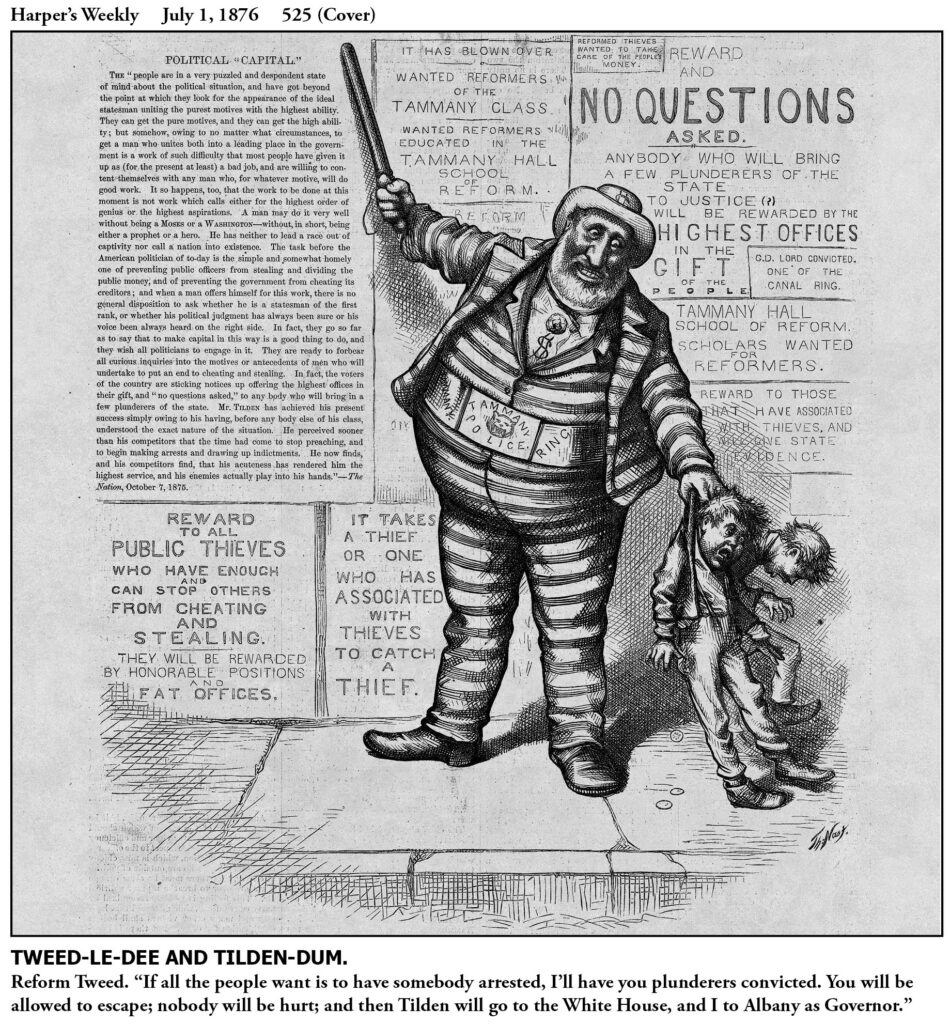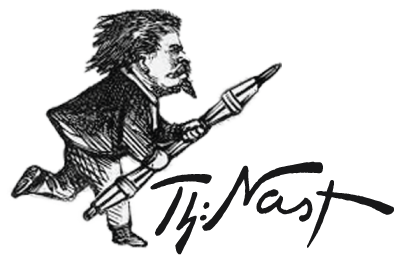
Harper’s Weekly – July 1, 1876
The answers to Nast’s predictive security concerns were accurate over time. Tweed’s first trial was postponed for a year. Eighteen days after it started on January 13, 1873, a hung jury was dismissed; it was probable but never proved, that bribery played a role.
A second trial ended in Tweed’s conviction on November 19, 1873. He was given a twelve-year sentence and jailed in the state prison on Blackwell’s Island.
Tweed served 19 months on Blackwell’s Island when the state’s highest court freed him for his criminal conviction, ruling that his 12-year sentence had exceeded the statutory limit of one year. However, after gaining his freedom on June 22, 1875, he was rearrested the next day on civil charges that he had misappropriated more than $6 million in public funds. Unable to raise $3 million bail, he was sent to Ludlow Street jail and filed an appeal. His trial was scheduled for February 1876.
By late November 1876, Tweed determined to escape. Although criminal guilt no longer was an issue, a civil judgment for debt might keep him in jail forever. He could hide out locally until his last appeal was concluded and then decide what to do.
At Ludlow Street jail, Tweed was granted privileges and liberties allowed to people imprisoned for debt — but not to most other inmates — such as carriage rides and visits to his home and his adult children’s homes. Reportedly, he paid a gang to plan and execute his escape while on a home visit.
Upon arriving at his house at 647 Madison Avenue on December 4, 1875, accompanied by the warden and another jailer, he saw the sign indicating that “tonight was the night.” The prison officials knew nothing of the plot, and ate and drank liberally. After dinner, one guard rose to wash his hands in the dining room basin. Tweed excused himself to wash in another room, closing the door behind him and walking out the front door to a waiting carriage.
Tweed hid out in New Jersey and then Staten Island for a while. In May, he took a schooner to Florida, disguised and with a young guide who didn’t know his identity. He arrived in Santiago, Cuba on June 12, 1876, and sailed for Vigo, Spain, on July 27. Arriving on September 6, he was arrested by the Spanish government in response to wanted notices sent out by the State Department to Spanish port cities while he was in transit. No photographs were available but some of Nast’s cartoons were distributed to serve the purpose.
In particular, Nast’s July 1 cover cartoon, Tweed-Le-Dee and Tilden-Dum, hit the mark. In print June 22, it was precisely timed to reach readers a week before the Democratic National Convention in St. Louis. Nast, correctly anticipating that Samuel Tilden would gain the nomination, challenged his claim to being a reformer and attacked his denial of Tammany Hall connections. Tilden was the unseen “twin” of “Reform Tweed,” an escaped convict wearing a large “Tammany Police/Tammany Ring” belt while collaring a pair of juvenile sneak thieves. The caption insinuated that in a Tilden presidency, as in his current governorship, petty crooks would be arrested while major culprits like Tweed would be rewarded with public office.
The Vigo authorities identified Tweed from Nast’s cartoon. Unable to read English and unfamiliar with the case, they assumed that the fugitive was guilty of kidnapping the two small urchins in the cartoon, and arrested him and his companion William Hunt.
